Any average gardener plans to land such a popular culture as a cherry. A delicious useful berry that matches the early summer, it is liked without exception to everyone. Such a variety of culture as a colonum cherry is becoming increasingly popular not only among gardeners, but also on an industrial scale. The miniature compact church shows high yields, while it takes at least a garden square, does not give a big shadow and pleases the fruits for 2-3 years after landing. In this selection of material - all aspects of the choice of the best variety, nuances of planting and the peculiar features of colon-shaped cherries.
Cherry Colonum: Characteristics and features
- Comparatively "young" variety, colon-shaped cherries are miniature trees, a compact cylindrical shape, growing strictly up. Hence the name of the species - "Colon's", i.e. A tree resembling a column.
- Croon of coloniform cherries is formed due to short skeletal branches and side shoots that do not grow more than one meter in diameter. This significantly saves the place in the garden and allows you to plant neighboring trees with a distance between their crowns only 1 meter.
- The main characteristic of colonum species of trees is education on lateral shoots of many fruit processes.
- Height, adult tree reaches no more than 3 meters. A feature of the species is the license trunk and little branched side shoots. During the period of fruiting, the trunk of the fruits is "stolen".
- The thermal-loving culture, sweet cherry, has an extensive cultivation area: from solar southern regions to middle strip in Russia and Siberia. Naturally, in the regions with a cold climate, you will need more careful care for coloniform cherries.
- Under favorable conditions, a colon-shaped cherry begins to be froning from the 3rd year of life and grows in one place under 30 years.
- This fruit variety of cherries is widely used both amateur and industrial production. Average yield indicators of one tree vary from 12 to 15 kg.
- Cherry berries contain beneficial organic acids, polysaccharides, valuable micro and macro elements (iron, potassium, calcium, iodine, magnesium, phosphorus), as well as vitamins (B, C, E). The fruits of sweet cherry are used, both in fresh form and in recycled (jam, compote, jelly, etc.).
Cherry Colonniform: Advantages and Disadvantages
A colonum cherry has a lot of advantages when growing it in the garden, attracting not only amateur gardeners, but also large farms.
- Compactness. Plants have a small compact form of the crown, allowing you to save space for other fruit trees and shrubs. Trees can be planted in a row even on the border of the site, not creating shadows and competition to other plants.
- Convenience and easy to care. Small sizes and lack of strong tv, spreading branches make it easy and convenient to collect the harvest, produce pruning, to cover for winter and handle colonum-shaped trees. In addition to marked advantages, colon's shapes do not need complex trimming, as ordinary trees with a spreaded crown.
- Decorativeness. A colonum-shaped cherry "fits" into the format of any landscape, while maintaining the integrity and the primordial type of site design. Mass planting of colonum-shaped trees look very effectively and decorative.
- Sociality. The varieties of colonum-shaped cherries are distinguished by the breeders of colonum-shaped cherries and allow us to be touched by berries at the very beginning of summer.
- Self-duration. Allows you to get stable yields regardless of weather conditions and presence, pollinated plants, insects.
- Taste. Colon's cherry is characterized by high taste. Her fruits are juicy, sweet, with a dense fragrant flesh.
- Yield. Despite the miniature sizes, a colon-shaped cherry is characterized by high yield and on average 3 such "mini-trees" completely replace one large cherry tree. At the same time, a landing is possible under counter-like cherries, for example, strawberries, while the usual tree with a spread and dense branched crown does not miss the sunlight and "gives" a thick shadow.
Of the disadvantages or, rather, preferences, colon-shaped cherry should be noted the increased demanding of the plant to good illumination, moderate humidity and protection against strong winds. Considering these factors in the care of the fruit tree, it is possible to easily grow a colon-shaped cherry on its plot.
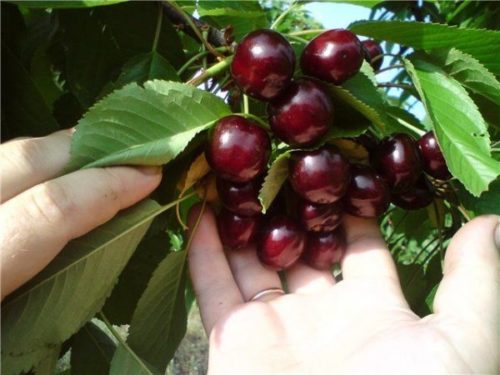
Cherry Colon Featory, Popular Sorts
Colon-shaped cherry varieties are not so popular in domestic gardening, like, say, apple or pears. Meanwhile, on the market for the sale of seedlings has already appeared their "leaders", which are particularly popular with high demand from the consumer.
The most popular and in demand are varieties of colon-shaped cherries "Helena" and "Silvia", suitable for cultivation in almost any climatic zone. These frost-resistant, large-scale and high-yielding dessert varieties of coloniform cherry are considered to be the best for growing in the suburbs.
Cherry Colon Featory "Helena"
- Dessert large-scale sort of cherry with average maturation, fruiting falls at the end of June.
- In height, the tree reaches no more than 3 meters, in a dimer - up to 1 meter.
- Grade "Helena" is characterized by a ruby-red color of the fire, the weight of one cherry is 12-14 g.
- The pulp of sweet cherries and dense (slightly harsh), the floor is shrinkable, dark red with lighter veins; Differs high taste quality.
- Fruption continues until 20-25 years, with an average harvest - 15 kg from one tree. Durable high-yielding grade.
- Frost-resistant grade, transfers to -26 0With frost, well adapted to the climatic conditions of the middle strip of Russia.
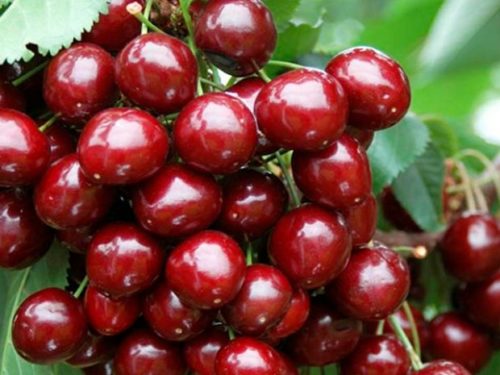
Cherry Colon Featory "Sylvia"
- The variety is not much different from Helena's cherry. Taste, appearance, size and structure of fruits are almost identical.
- The dessert early grade of Colon's cherry cherry "Silvia" matures 10-15 days earlier than "Helena".
- Resistance to diseases and pests are high. The level of frost resistance is medium. Under the context of the Moscow region needs additional shelter for the winter.
- High-yielding grade, with good transportable qualities. Kostyanka with a dense pulp is not susceptible to cracking even in rainy weather.
Silvia and Helena cherry varieties are intercourable, so they are recommended to plant them together. In addition, such "symbiosis" on the site will provide higher cherry yields.
In addition to the above-described varieties, other varieties of coloniform cherries received widespread among the gardeners.
Cherry Colon Featory "Sem"
- A variety with early ripening time, fruiting begins in early June.
- A low tree, reaching no more than 2 meters in height.
- Fruits of high taste quality, but slightly smaller sizes than previous varieties. Boundary weight - 10-12
- The "Sea" variety is considered a universal pollinator for other varieties of colon-shaped cherry, is used in group landings, fruits up to 15-20 years.
Cherry Colon Featory "Little Sylvia"
- The hybrid variety is a miniature copy of Silvia's cherry species. The height of the tree does not exceed 2 meters, and the crown is no more than half a meter in diameter. The variety is practically not branching.
- Fruption begins from the end of June. Berries are identical in shape and in the structure, the same name "Sylvia", but the shernya variety is more reminded to taste.
Black colonum cherry
- Dwarf high-yielding variety of coloniform cherry, reaching a height from 1.5 to 2 meters and 50 cm of the crown width.
- Unpretentious, frost-resistant grade, but in the cold regions requires shelter for the winter.
- Fruits juicy, delicious, dark ruby \u200b\u200bcolor.
Yellow colon's cherry
- A distinctive feature of the variety is the yellow color of cherry berries. This color advantage is less attractive for birds, so the sweet cherry is preserved in the tree.
- The variety is characterized by a life expectancy (up to 20 years), and high yield.
- The height of the tree can reach 3 meters, the crown diameter is up to half a meter. Berries are large and juicy.
Cherry Colon Featory "Sabrina"
- Adult height - 2-2.5 m, crown diameter - about 1 meter.
- The variety has an average level of frost resistance, increased resistance to diseases and pests.
- High-yielding grade, with average maturation. Fruption begins in the second half of June. Berries light red.
Reviews of many gardeners grown by a colonumcine cherry show the effectiveness and successful cultivation of such trees in the garden. Positive recommendations are not only household lovers, but also a larger, commercial, format of cultivation of coloniform cherries confirm the series described above, the advantages and advantages of this species.
Cherry Colon Featory, where to buy?
You can buy colon's cherry seedlings in botanical nurseries, garden centers or online stores. As for "Online Sales", it is important to choose online stores or nurseries with a good reputation, according to preliminary recommendations or positive customer reviews. Only in this case can be confident in the purchase guaranteed the desired grade of cherry.
- The most important thing is what to pay attention to when buying seedlings is the state of the upper kidney of the young tree. The top point of growth should be live, well developed, without damage and any defects. Only in this case the colonum shape of the tree will be able to grow and successfully develop in a new place.
- The seedling barrel should be smooth, without strong curvature with smooth intact crust. If there are leaves, they should also be without visible damage and pests.
- With an open root system, the roots must be well developed, alive, without rot and dead tissues.
- In addition to the specified signs, acquiring several seedlings, you should choose copies of one age and different varieties.
Planting coloniform cherry
In the process of breeding, scientists have achieved sufficiently high self-pollution of colon-shaped cherry. But, the yield of fruits can be enhanced even more by landing on one site several varieties of trees.
The universal pollinator for all colon-shaped sherry is the grade "Sem".
Consider the features of planting these fruit trees.
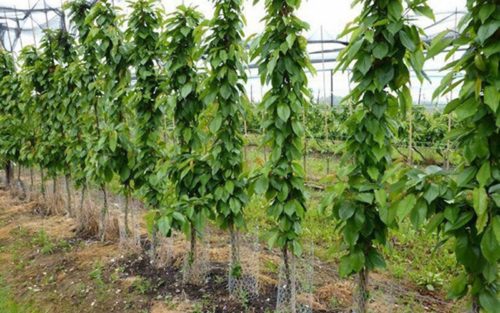
Choosing a place for landing colon-shaped cherry
- The place for planting a coloniform cherry should be well lit and protected from a gusty wind.
- Sun-teeve plant, cherry, it is better to plant on the southern, more sunny side of the garden.
- The soil planting soil should be loose, fertile, with a neutral medium reaction, with deep groundwater running (1.5-2 m). In lowland, where there is a frequent stagnation of moisture or in a wetlands, the plant is exposed to rooting roots and death.
- Well, if you manage to plant a sneaker on any hilly or a slope on the south side of the site protected on one side by the house, fence or other buildings. On such natural elevations, the soil is faster and used to heat up in the spring, no moisture after the rains or during the melting of snow, does not "settle" cold air.
- Time landing trees depends on the region and its climatic conditions. So, in the northern regions, only the spring landing is recommended, so that the seedling manage to root and not extinct in winter. And in the southern climate and in the middle lane of Russia you can land saplings of sweet cherries, both in spring and autumn. Especially productive autumn landing in the south, when the seedlings are perfectly rooted and passed the natural period of adaptation in winter. Such trees are further distinguished by endurance and not good.
- If the seedlock was acquired in the fall, and his landing is planned for spring, - the sapling is shallowly checked before the onset of spring.
- In the spring, the landing is carried out before the start of the sludge, in a well-heated land (when there is no threat of return freezers). Planting trees need enough quickly, so that the roots of the seedlings do not swam in the sun.
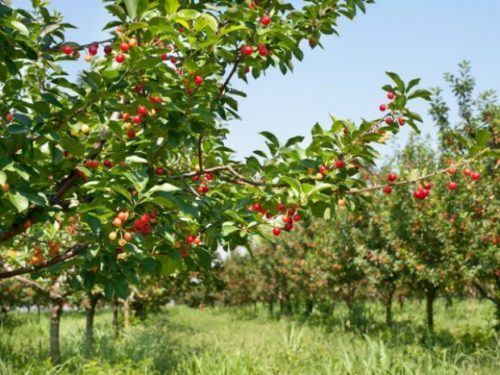
Agrotechnology landing colon-shaped cherry
- Approximately 2-3 weeks before landing (for soil shrink), it is preparing a landing place: the site is drunk, organic fertilizers (compost, manure) are made and dig a landing hole.
- The diameter and depth of the pit depend on the size of the root seedlock, but, on average, 70 x 70 cm are 70 x 70 cm.
- If several sets of trees are planted, it is enough to leave the distance between them in 1 meter, in a bent - 2-3 times more. Such savings area is possible due to the vertical growth of shoots (without strong branches).
- Immediately before planting, the soil is prepared (approximately by the volume of landing pit) of humus and chernozem (in a ratio of 1: 3). It is better to add fertilizers containing potassium and phosphorus to a mixed nutritional substrate (based on: 15 g each per pit). Other mineral fertilizers are better not to use, as they oppressively affect the roots of the fruit tree.
- At the bottom of the pit, the drainage layer is stacked in the form of large river sand, rubble, clayjit or brick fragments. Drainage perfectly regulates the humidity of the soil, not allowing the excessive water stagnation.
- Then, a part of the soil mixture is poured into the landing jam. Pre-moisturized roots of the seedling are thoroughly straightened, they are installed nearby (peg).
- In addition to pre-moisturizing the roots in warm water, 12 hours can be soaked in the growth stimulator, followed by treatment in the clay solution. Such a "clay bolt" prevents the drying of the roots during the landing.
- A pit with a seedliness falls asleep by soil, periodically tamping the soil, in order to avoid the formation of voids.
- The root neck of the seedling is not deepened into the soil, it should come about 2 cm above the ground. Over time, the root cerv is equal to the ground.
- After planting, the seedlings are watered, pouring into a rigorous well for 2-3 buckets of water.
- A young seedling is tied up to the support (wooden peg), and a shallow trench is preparing in a rolling circle for further watering of a fruit tree.
Colon's cherry, care
Care for colonum-shaped cherries includes: watering, loosening, feeding, protection against pests and simple trimming of a tree.
With timely and correct implementation of these agricultural events, a consistently high harvest on the site will be provided!
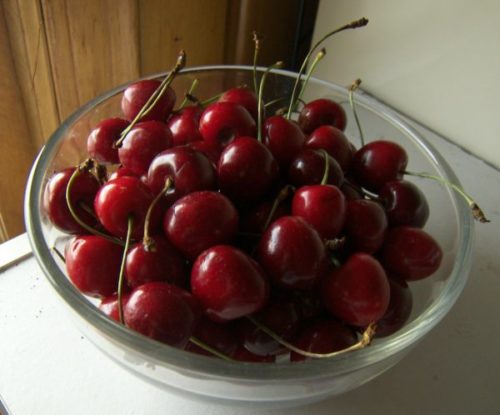
Watering and loosening coloniform cherry
- Cherry is a moisture fruit culture, at the same time, without carrying moisture. Therefore, it is important to monitor the condition of the soil around the tree so that it is constantly in a wet state. However, water should not be "staging" on the plot.
- It is especially important to provide regular watering with young seedlings in the first 2-3 years after landing. Approximately, one young plant will need 3-5 liters of water (every two days). At the same time, on hot days, irrigation rates increase, in rainy - reduce.
- In sufficient watering, the sweetheart needs both at the stage of formation of the barriers and the ripening of fruits. For adult copies of cherry water, the water rate is doubled.
- After irrigations, the roaring zone is loose, enriched with oxygen soil. Excellent results gives mulching of the priority circle sawdust.
- It should be deleted from the section of the weed grass ("Competitors for nutrition"), and in the fall (for the purpose of preventing diseases) to burn all plant residues.
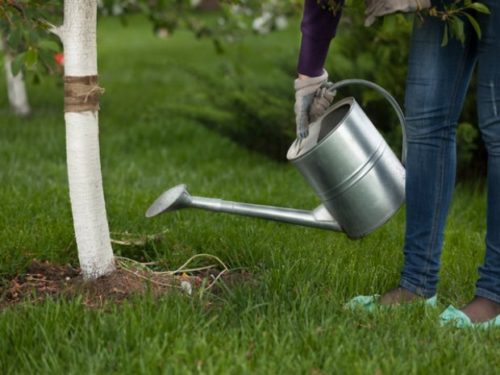
Making fertilizers and feeding of coloniform cherry
- Make feeding for coloniform forms of cherry should be 2-4 times for the entire vegetative season.
- The main feeding is carried out in early spring, immediately after melting snow. During this period, nitroammophos is made (containing nitrogen, phosphorus and potassium) and wood ash. For young trees, it is enough to take 20 g of these fertilizers, for trees older than 5 years - 2 times more. Fertilizers can be added to the ground and explode the soil, and it can be labeled several deep holes (40-50 cm around the trunk), where and fall asleep the nutritional mixture. After applying fertilizers, the boron area is watered with water.
- An alternative to the above fertilizers in the spring period can be an organic feeding with a solution of chicken litter or a cow (1:10 with water). It is advisable to carry out a similar feeder twice, with an interval of about 1 month (when the tree begins to bloom).
- The next feeder is carried out in the summer. For her, it is possible to use modern comprehensive fertilizer "Novalon" (3 tbsp. At 8-10 liters of water) and potassium phosphate fertilizers (15 g each). Some gardeners use the urea solution in summer, dissolving 30 g of substance in 10 liters of water.

- In no case should not contribute a large number of nitrogen-containing fertilizers that stimulate the development of green mass. It is enough will be one-time (spring) feeding with nitrogen content. If, for example, in the fall of nitrogen complexes in the ground, the plant actively "sees" and will be especially vulnerable to cold and death.
- In the second half of autumn, when the plant is preparing to winter, superphosphate and sulfate potassium. For this, in the periphery of the roar zone, 300-400 g of superphosphate granules and 100 g of potassium sulfate are scattered.
- It is important, 1 time in 5 years, to conduct the so-called. The correction of the soil determines its acidity. As you know, the acidic environment provokes the development of pathogenic microbes and malicious insects, so it should periodically limit the soil. The optimal pH level for cherry is neutral. To independently determine the level of soil acidity, use 9% vinegar. For this, the sample of the soil around the tree is taken (at a depth of 20 cm) and a little vinegar is poured on it. The hiss will indicate neutral acidity, the absence of bubbles - about the need to lime the soil. You can not enter lime along with nitrogen-containing feeders. A limestone flour, dolomitic flour or old lime plaster is ideal for lime. Application rate "neutralizer" from 150 to 300 g (depending on the "neglect" portion) 1 m 2 Square.
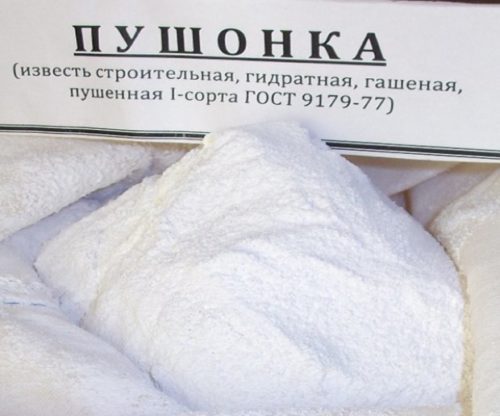
Pruning coloniform cherry
- In the first year after landing, all inflorescences are removed on the cherry tree. Thus, the best rooting of the seedling, its acclimatization and the economy of "Forces" for further growth and development is carried out.
- Forming and sanitary trimming is carried out in early spring, the places of large sections are lubricated with a garden boiler.
- Sanitary trim includes the removal of damaged, patients or frozen shoots.
- Having one main trunk, the pruning of colon-shaped cherry is carried out according to the scheme:
- In the 1st year, the side shoots are plugged at a distance of 10 cm from the trunk; cut off the top of the cherries.
- For the 2nd year, side shoots are plugged at a distance of 20 cm from the trunk; The thrust is cut off, leaving 30 cm.
- On the third year, pinch out side shoots at a distance of 30 cm from the trunk; The upper escape is cut.
- At the 4 th year removed thin branches obscuring the trunk.
- On the 5 th year cut off the tip of stopping its further growth at 2-2.5 m.
- After 6 years, the side shoots are cut every three years.
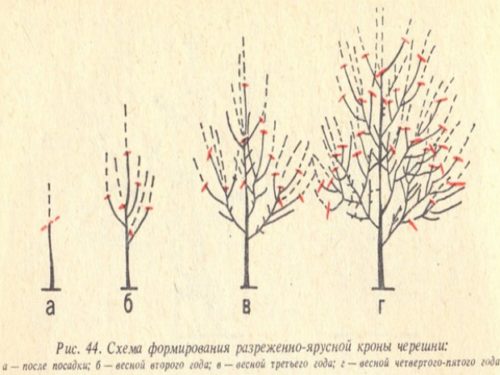
- it is possible, by forming the trim, to create a different shape of the crown columnar tree on its own initiative:
- In the classical scheme of trimming there is an intensive development of side shoots. Full of fruit-bearing shoots of them do not work, so the increase is not removed and do not pinch.
- Scheme of trimming by the type of alive hedge is possible only with close planting of trees. At the same time, about 10 cm of all side shoots are removed annually. This method "works" only the first 2-4 years, after which the crown is covered and the reduction in the yield is cherry.
- It is also possible to create a cupid crown form. For this, each year is removed the top (and the upper shoots) of the tree, so that the krona is formed only at the expense of side shoots. The method is acceptable for low cherry varieties.
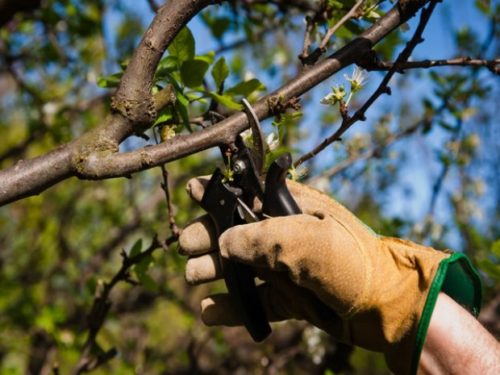
Fighting pests and diseases of coloniform cherry
- To prevent the appearance of pests, in spring (before flowering), colonum cherry trees are treated with a system of systemic fungicide or burglar liquid.
- In order to avoid infection with diseases and pests, the cherry barrel annually with chalk or lime.
- In case of appearance on the rodent site (for example, hares), which brighten the bark of the tree, should be coped with a trunk, a grid or a sweetheart, at a height of about 50 cm.
- A colonum-shaped cherry may be affected by such diseases as: spottedness (bright and holey), a pass, the drovers (false and sulfur yellow). In this case, all damaged leaves are removed, and the plant is sprayed with burgundy liquid or by any fungicide, for example, nitrafen.
- The fruit plant is vulnerable to caterpillars, weevils, frozing and tool. Related insecticidal drugs are used to combat pests.
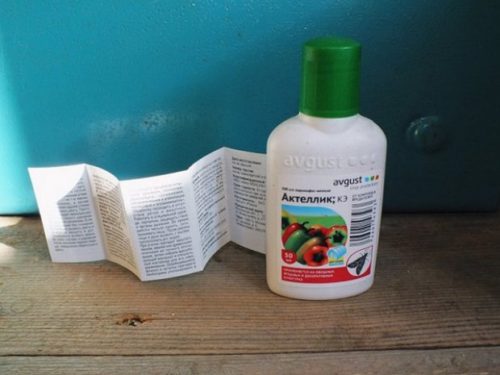
Colon's Cherry Shelter
- Colon's cherry varieties are distinguished by low frost resistance and need additional shelter for the winter. Especially this event is relevant for young rapid seedlings and regions with severe winters.
- Preparation for winter includes moisture-proof abundant (autumn) watering and mulching of the rolling circle with a thick layer of sawdust or peat.
- For the shelter of compact trees, spandex, agrofiber or burlap, which is winding the trunk and crown of plants. You can also establish a wooden support around the tree in the form of a pyramid and wind it with any nonwoven material.
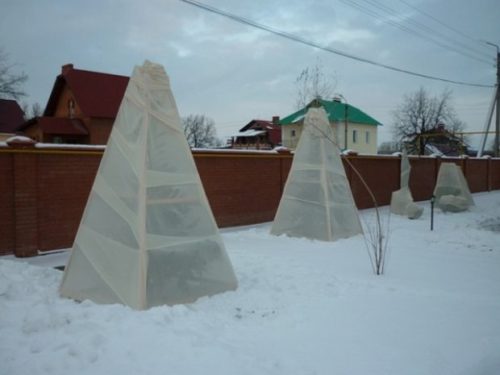
Coloning cherry breeding
Colon's cherry varieties multiply by vaccination, bone or cuttings.
- The reproduction of vaccine is possible on a 2-year-old seedlings (stock) of the cherry. For vaccination, pets are used, about 10 cm long, which is "vaccinated" to the cherry trunk. The vaccination is made at an altitude of 1.5 meters above the ground. The lead is left to grow together with several, lower, branches of the stock.

- Bone reproduction is a time-consuming and long method of breeding cherry. In this case, the probability of preserving varieties is approximately 50%. The bones of ripe berries are planted into the container (at 1 cm depth) with loose light soil (sand, peat, solid soil). After landing, the soil is watered with warm water, and the container is closed with a film or glass and placed in a warm place. Regular watering and ventilation allow you to successfully germinate seedlings that can be planted in an open ground in May. After a year, the grown seedlings are transplanted for a permanent place.
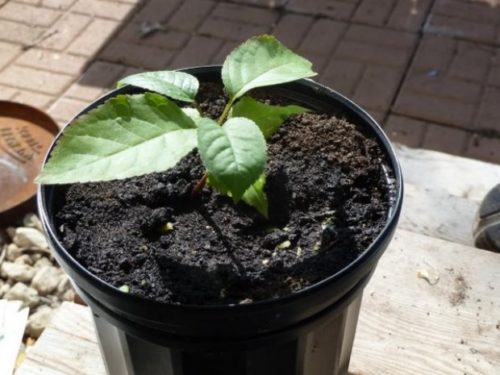
- Most often use a method of breeding with cuttings. For this, the top shoots are cut off, about 10 cm long, the sections are treated with "rhoin" (or another growth stimulator) and placed on rooting into a container with loose soil. After successful rooting, the cuttings are planted into the open ground.
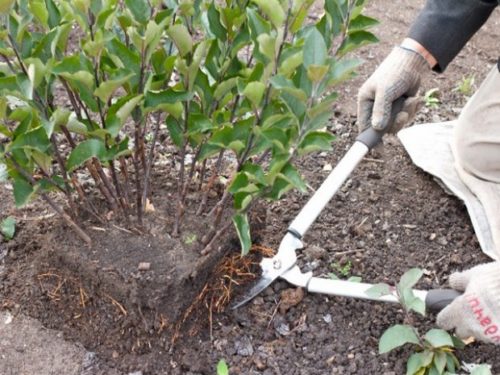
So, a colon-shaped cherry is the optimal version of the fruit tree, which allows saving the area, enjoy delicious juicy berries and ensure the effective design of the garden area.
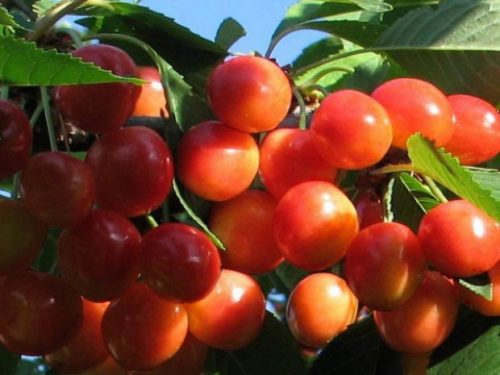

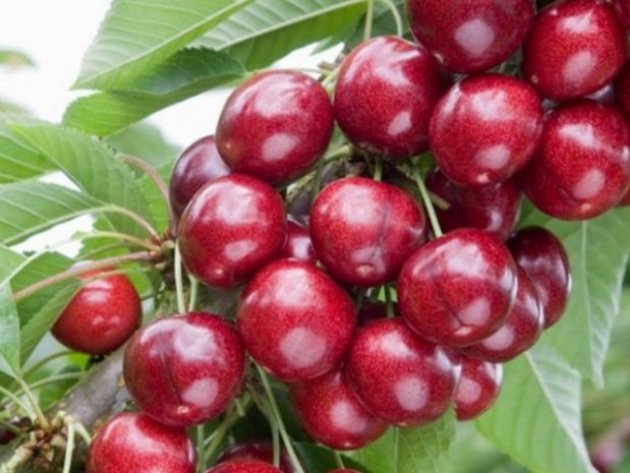
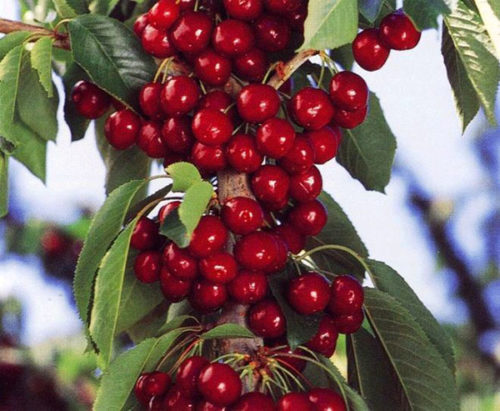
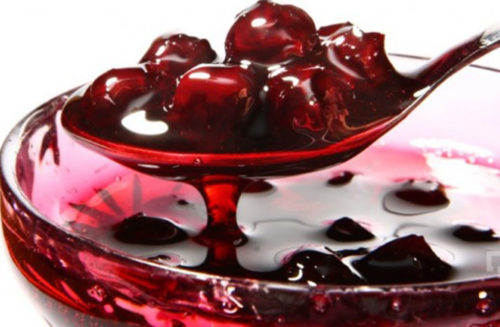
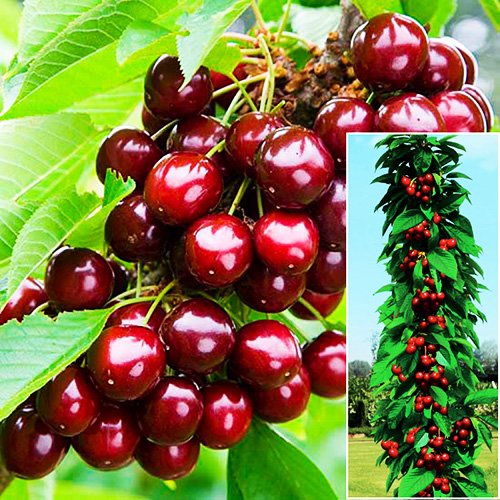

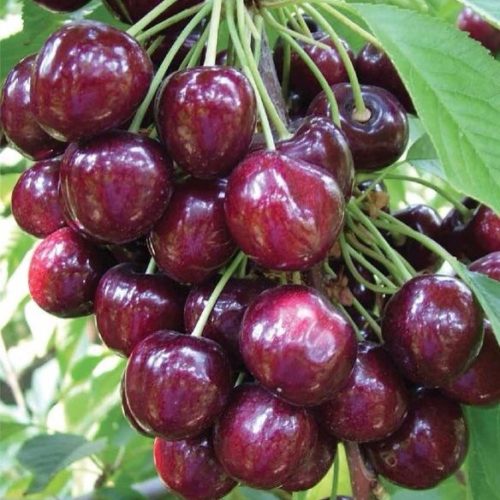
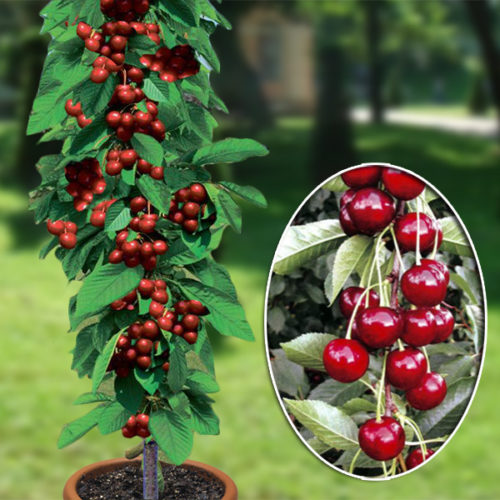

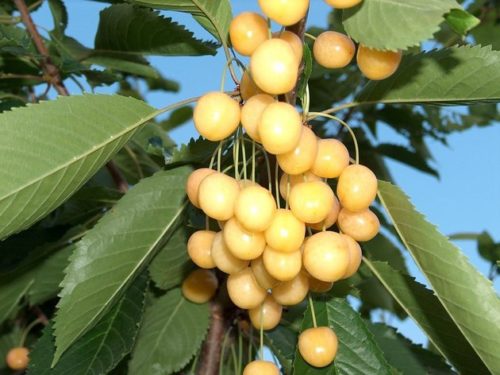
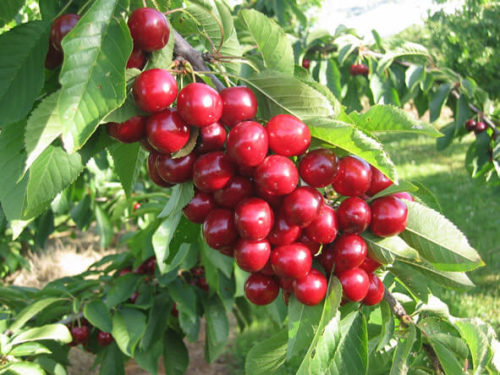
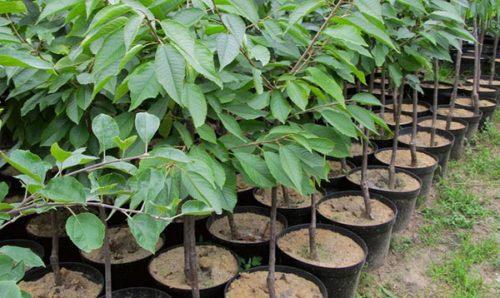
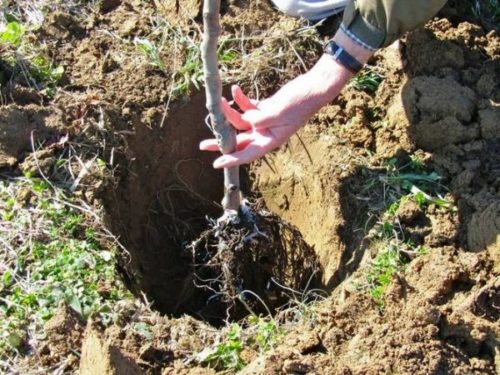
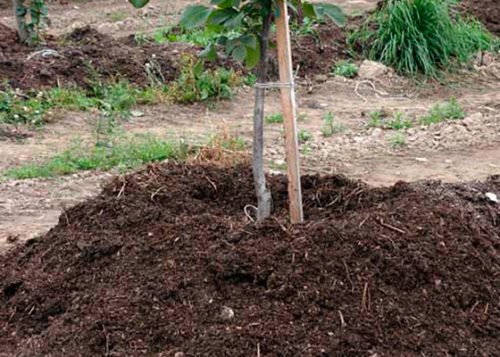
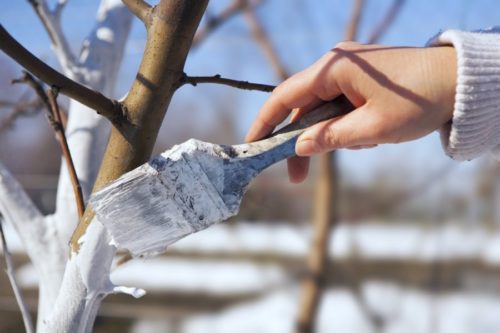



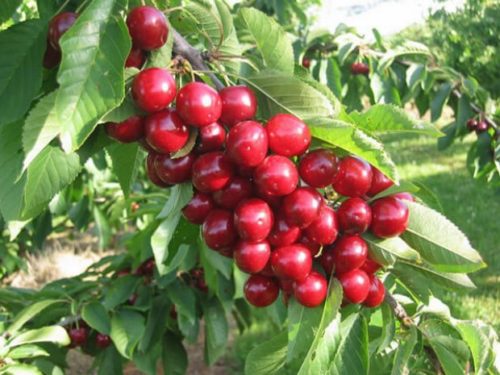
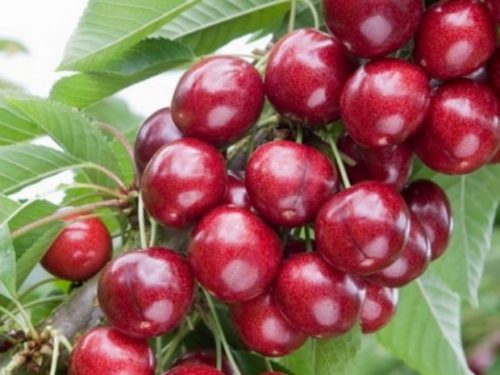
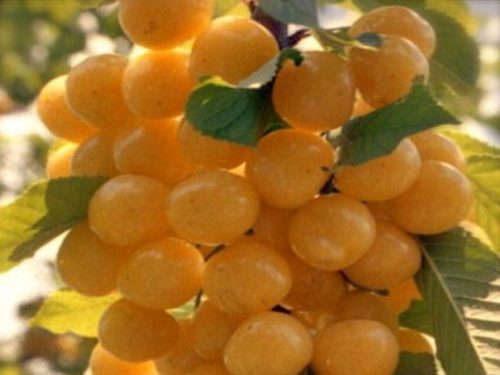
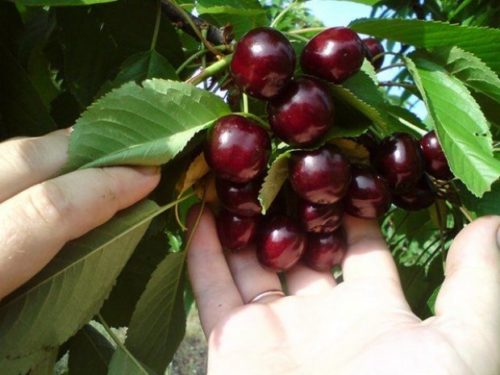












 Start a discussion ...
Start a discussion ...